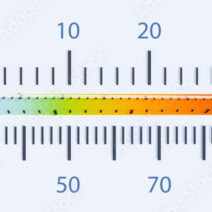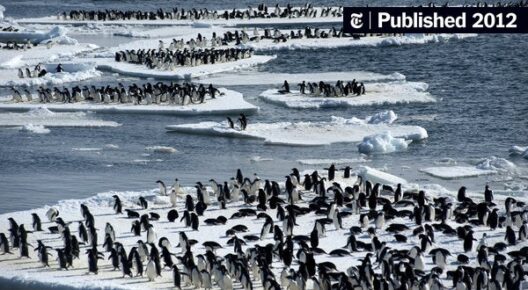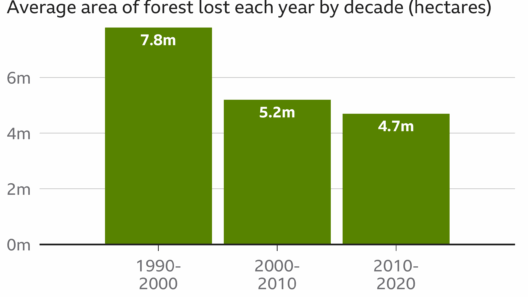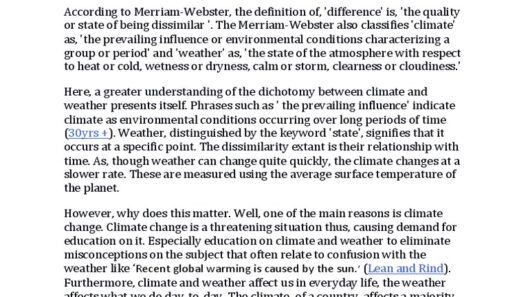The discourse surrounding global climate change is not merely academic; it bears profound implications for socioeconomic stability, biodiversity, and human survival. As scientific consensus coalesces around the urgency of climate action, projecting possible future changes in the global climate becomes imperative. Various models and scenarios are utilized to forecast the trajectory of our planet’s climate system, illustrating different potential outcomes based on levels of greenhouse gas emissions, technological advancements, and policy actions.
This article explores several plausible futures shaped by climate change, considering their ramifications and highlighting the importance of proactive measures to mitigate adverse effects.
Monitoring Environmental Shifts: What Changes Are on the Horizon?
Several interrelated factors underpin the shifts in our climate trajectory. Among them, rising temperatures, alterations in precipitation patterns, and amplified weather extremes are particularly salient. Recognizing these changes helps to understand the multidimensional impacts climate change will have on various ecosystems and human populations.
Rising Global Temperatures
One of the most conspicuous indicators of climate change is the increment in global temperatures. Historically, average global temperatures have risen by approximately 1.1 degrees Celsius since the pre-industrial era, a trend that could escalate dramatically if greenhouse gas emissions continue unchecked.
This rise in temperature engenders a cascade of effects. For instance, increased thermal energy in the atmosphere encourages the evaporation of water, exacerbating the intensity and frequency of hurricanes and tropical storms. Coastal communities are particularly vulnerable, facing potential inundation from rising sea levels combined with storm surges. The implications for real estate values, local economies, and public safety are immense, prompting urgent calls for resilient infrastructure and disaster preparedness strategies.
Disruption of Ecosystems
Climate change disrupts ecosystems globally, leading to habitat loss and species extinction. As temperatures rise, many species are forced to migrate towards cooler regions, often leading to a mismatch between predator and prey, impacting biodiversity. For example, polar bears and other Arctic species are grappling with dwindling ice cover, which is crucial for their hunting and breeding habits.
Moreover, changes in ecosystems can have a profound effect on food systems. Agriculture may face challenges due to altered rainfall patterns and increased pest infestations. Crops that rely on specific climatic conditions may yield diminishing returns, thus necessitating shifts to more resilient varieties or altering planting schedules. Food security could be jeopardized, necessitating innovative agricultural technologies and sustainable practices.
Changes in Precipitation Patterns
The alteration of precipitation patterns is another critical aspect of climate change. Some regions may experience more torrential downpours, while others could face debilitating droughts. This variability poses significant risks to both water supply and agricultural productivity.
Areas that once enjoyed stable rainfall may find themselves grappling with unreliable weather patterns. For instance, the American West is already witnessing more frequent droughts, affecting both urban water supplies and agricultural practices. Farmers in these regions may need to adopt water conservation techniques and make adjustments in crop selection to survive in a fluctuating climate. Urban planners are likewise challenged to create resilient water management systems that can mitigate the risks associated with severe weather changes.
A Street-Level Perspective: Human Health and Equity
While environmental changes are often the focal point of climate discussions, implications for human health and social equity must not be overlooked. The exacerbation of heatwaves poses direct health risks, particularly to vulnerable populations such as the elderly, children, and those with pre-existing health conditions. Heat-related illnesses and mortality rates could soar in areas lacking appropriate adaptation measures.
Furthermore, the impact of climate change on air quality cannot be ignored. Rising temperatures can exacerbate the formation of ground-level ozone, leading to respiratory problems in susceptible populations. Urban communities, often the most affected, face compounded challenges related to poverty and availability of healthcare services. Therefore, climate action must be inclusive and equitable, addressing the disproportionate burden borne by marginalized communities.
Strategies for Mitigation and Adaptation
Given the stark realities of climate change, the question arises: what can be done to mitigate its effects? The answer encompasses a multifaceted approach that integrates policy reforms, technological innovations, and shifts in consumer behavior. Transitioning to renewable energy sources, enhancing energy efficiency, and implementing carbon pricing mechanisms are essential strategies to reduce greenhouse gas emissions.
On the adaptation front, communities must invest in sustainable infrastructure, water management practices, and public health initiatives that prioritize resilience. Moreover, fostering a culture of environmental stewardship at the grassroots level can pave the way for collective action against climate change.
A Call to Action: The Road Ahead
The pivotal changes in our global climate demand vigilant attention and unified action. Understanding potential future scenarios allows us to not only comprehend the risks but also to galvanize efforts toward sustainable solutions. As we chart our course forward, it is vital to advocate for both ambitious climate policies and individual responsibility in treading lightly upon our planet. The future remains uncertain, but through concerted global efforts, we can shape it positively.





